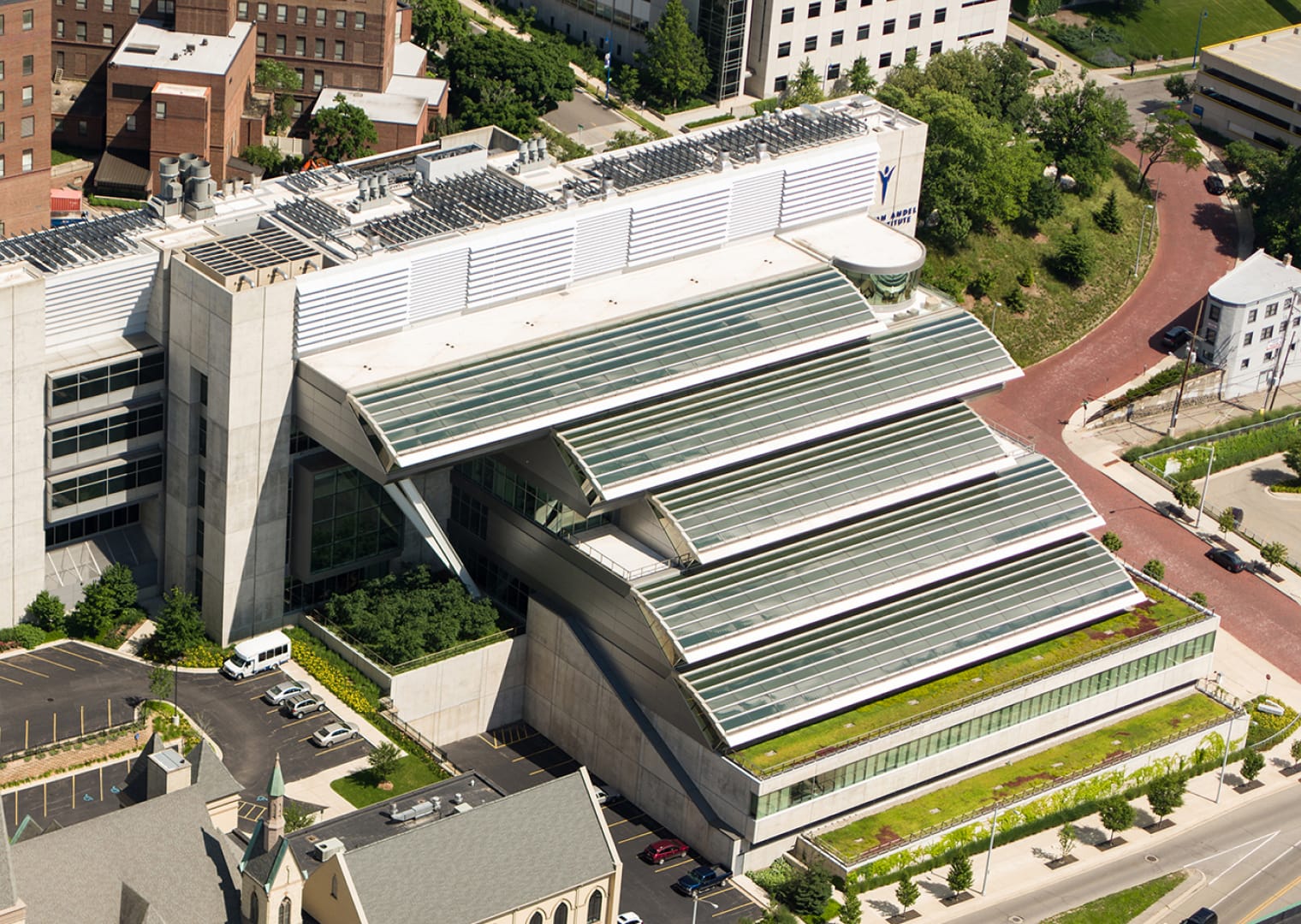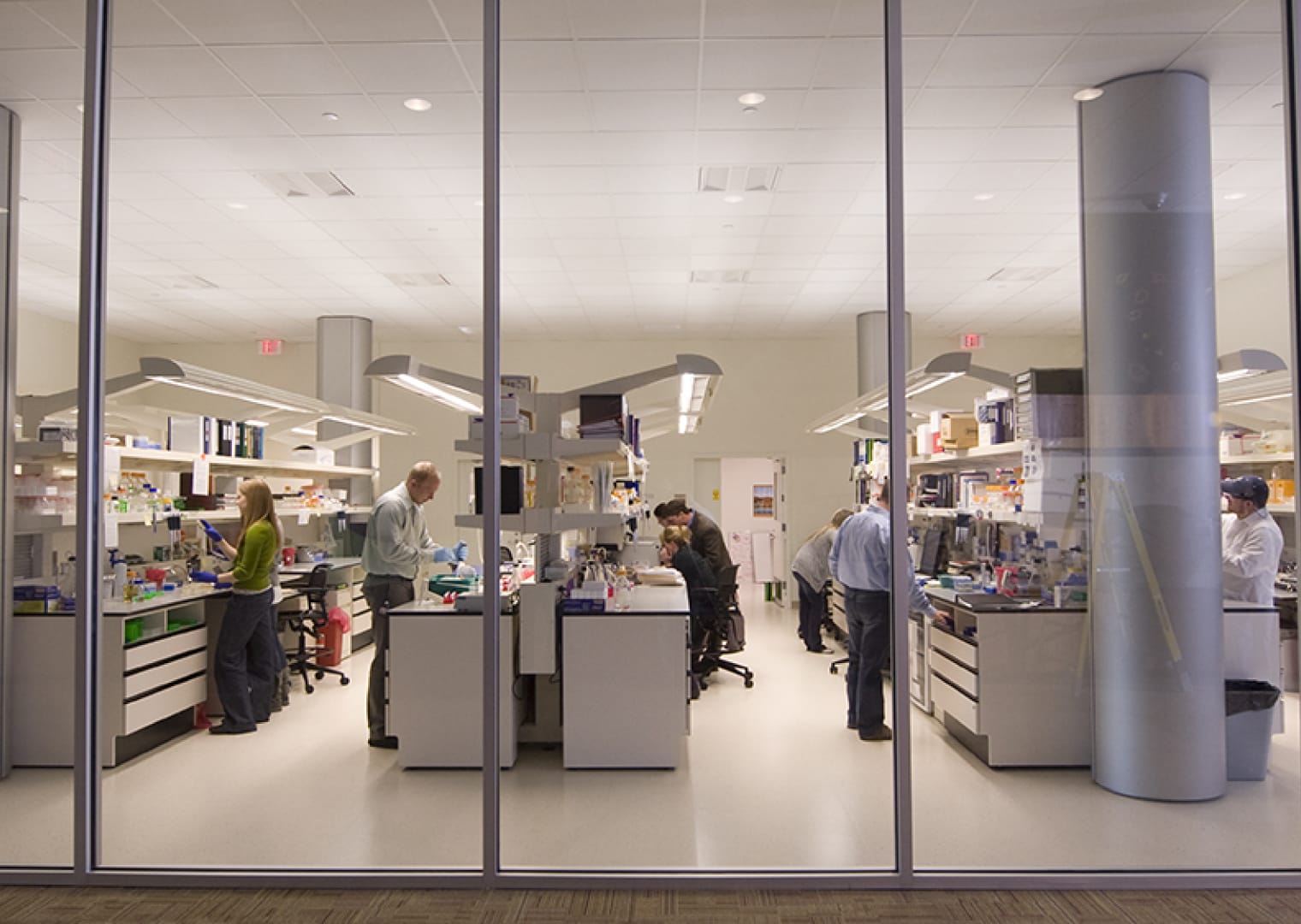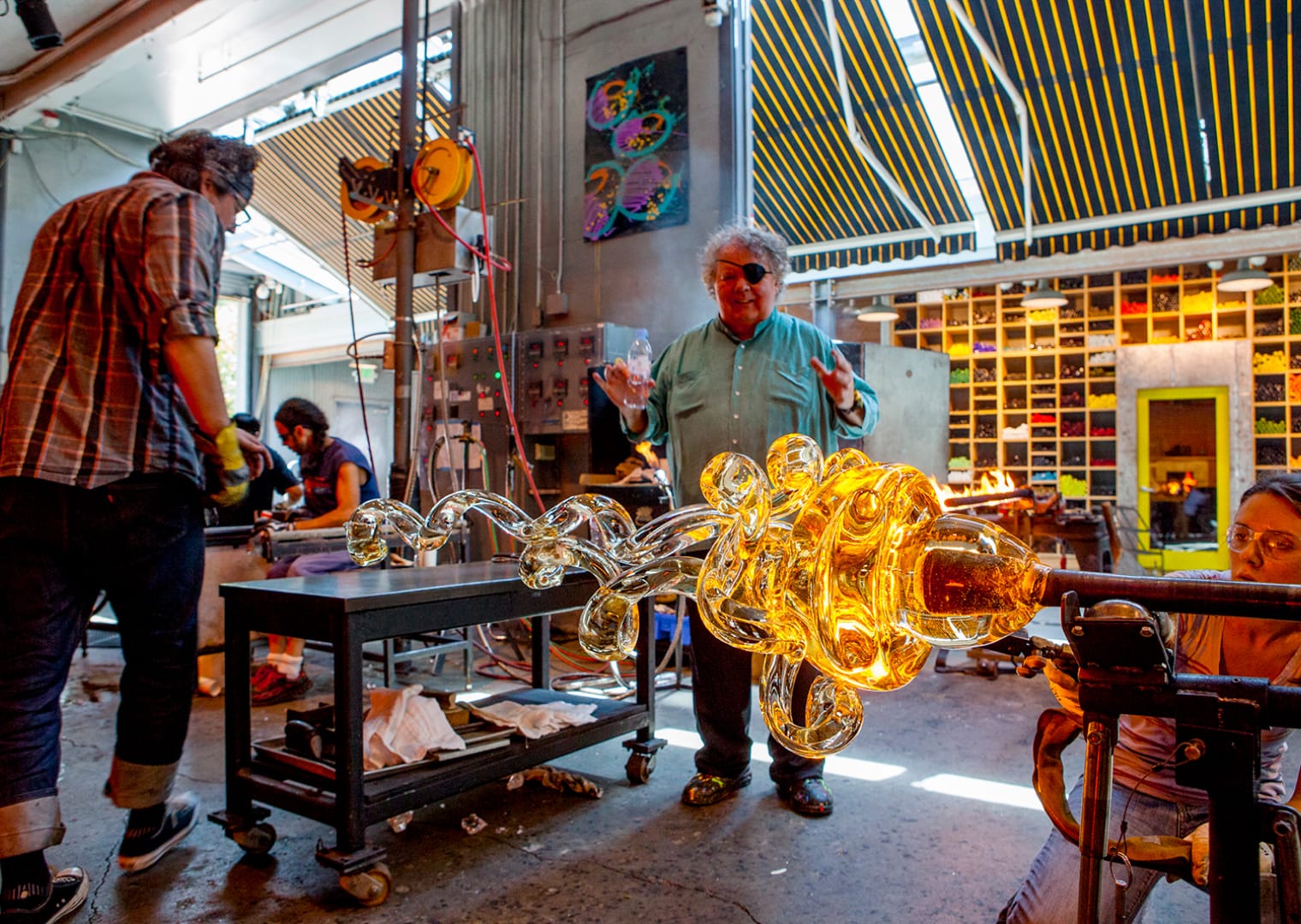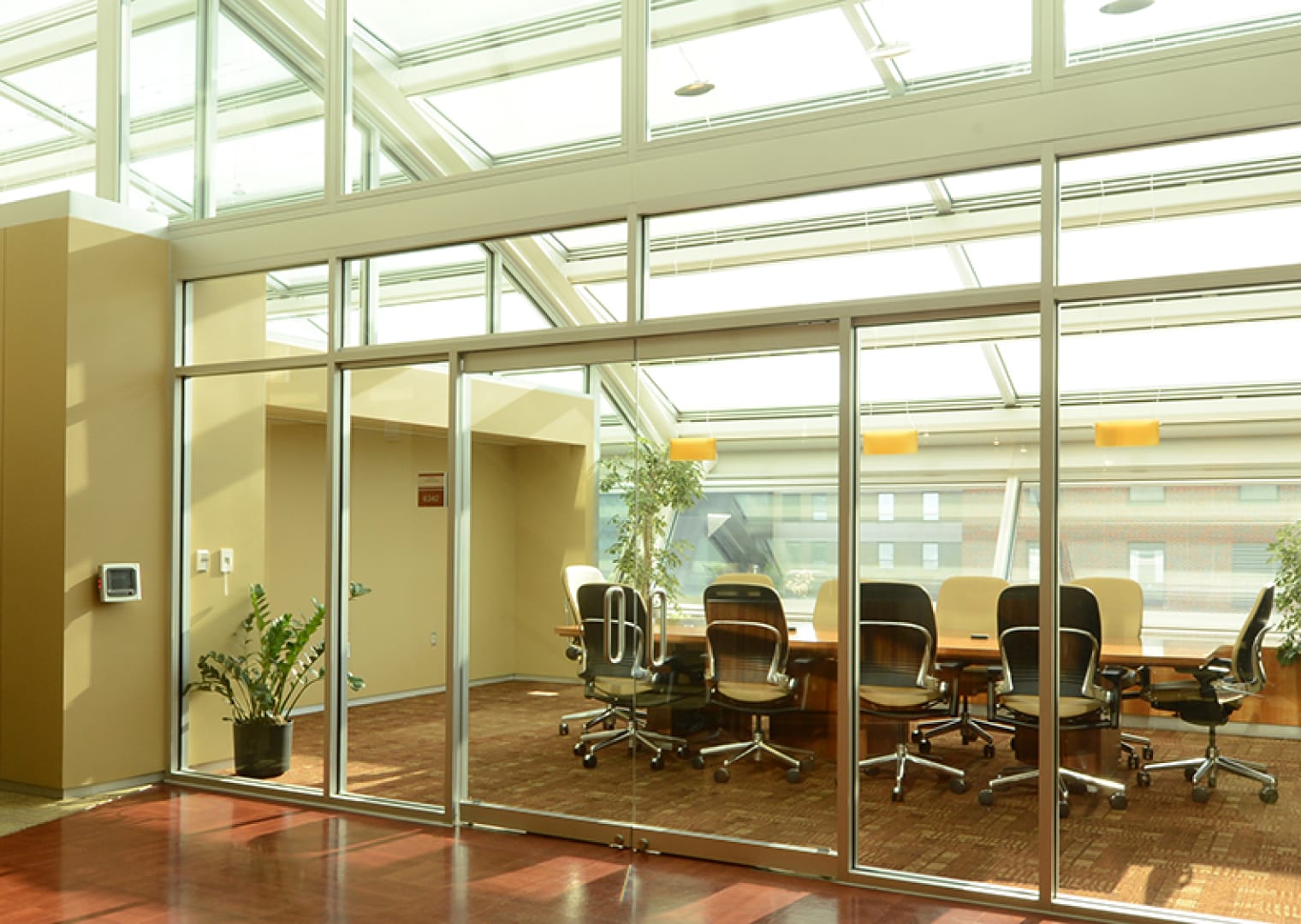
Our Facilities
Overview
Located in downtown Grand Rapids, Michigan, Van Andel Institute’s building was designed by famed architect Rafael Viñoly to be constructed in two phases; phase I was completed in 2000 and phase II in December 2009. The building is set into a steep hill at the beginning of Grand Rapids’ “Medical Mile” and is home to scientists, students and administrative employees.







LEED Certification
Developed by the U.S. Green Building Council, LEED stands for Leadership in Energy and Environmental Design. The LEED Green Building Rating System™ is the nationally accepted benchmark to recognize buildings and building owners whose goal is to reduce the impact on the environment and minimize energy consumption.
Van Andel Institute’s phase II building expansion is LEED certified at the Platinum level, which means that both the design and construction of the building incorporates green, or sustainable, features.
Sustainable Features Include
- Triple pane insulated glass with low-E coatings on two surfaces keeps winter heat in and reduces summer solar heat gain.
- High-albedo (light-colored) roof coverings reflect the sun’s heat and reduce the heat island effect.
- Photovoltaic panels on the roof provides power to implement a peak shaving plan reducing energy demands during the hottest days of summer.
- Heat recovery system designs reclaim heat from equipment to reduce heating demand loads on HVAC equipment.
- Low-flow toilet fixtures reduces the demand for potable water by more than 40%, also reducing the demand on the sanitary waste system.
- Daylight controls automatically reduce lighting levels in the building to reduce energy consumption.
- Intelligent building controls, right-sizing of equipment and system commissioning reduce overall energy usage, provide feedback on system performance, and identify areas for improvements.
- Green roofs and ivy walls provide reduced heat island effect, control rainwater runoff and provide improved views in the urban environment.
- The 33,000 gallon rainwater storage tank stores roof runoff for use in irrigation and cooling tower make-up water, reducing the requirement for potable water.
- The Institute is built on a redeveloped brownfield urban site.
- Facility-wide, employee-initiated recycling programs and sustainable purchasing policies improve the work environment and reduce the overall carbon footprint of the VAI.
- The facility is served by four public bus lines with an aggregate of over 200 rides per day, thereby permitting staff and visitors to avoid parking costs and save motor fuel energy.
